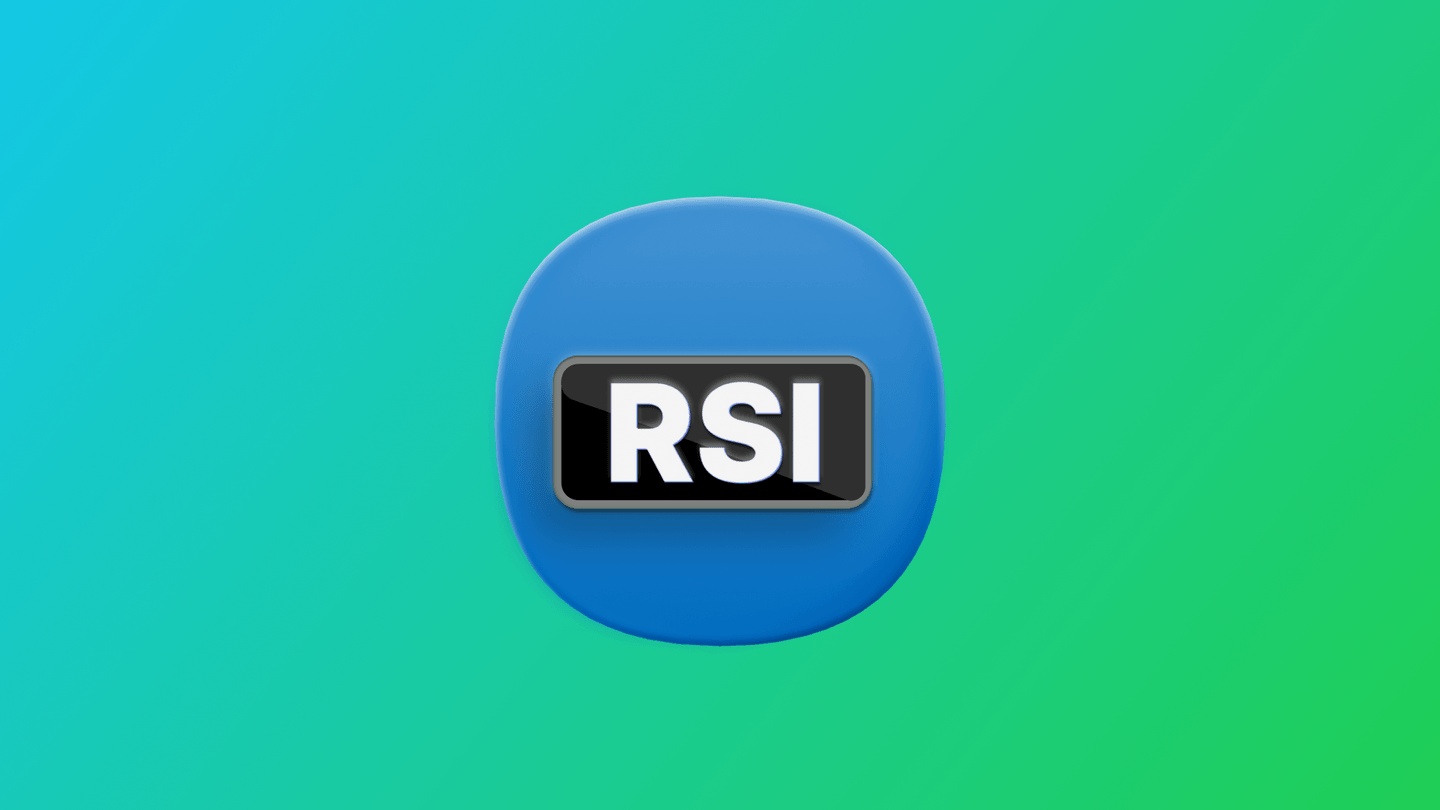What is the RSI: Definition & History
The Relative Strength Index, also known as RSI, is a powerful technical indicator that monitors any changes in price movements. J. Welles Wilder Jr was an American mechanical engineer who first developed the RSI technique between several other technical indicators. RSI plays a key role in the financial market since it takes the role of a momentum oscillator. It analyzes the fluctuations of price movement according to the previous values. Moreover, RSI can be an indicator of overbought and oversold assets as well as possible price turnarounds.
The RSI indicator ranges from 0 to 100, with its top and bottom values to be defined on 70 and 30, respectively. As claimed by J. Welles Wilder Jr any indications above 70 are defined as overbought, while any below 30 is considered to be oversold. In this article, we will provide brief guidance on RSI characteristics, how to calculate RSI indicator, some strategies to follow, and more.
What is a momentum indicator?
A momentum indicator is a useful tool for traders and analysts that assists them to determine the points where the market can or will have alternations. It measures the short-term movements of the price as well as the general trends. To provide security from those price fluctuations, a momentum indicator generates either an RSI “overbought” or an RSI “oversold” signal. Those signals are used by specialists to examine the market’s behavior.
How to read RSI indicator
To understand the function of the Relative Strenght Index it is first necessary to become fully conversant with the way an RSI indicator can be interpreted. The RSI oscillates between 0 to 100. When the index exceeds the value of 30, it is interpreted as a hopeful sign, and when it runs below 70 it forms an alarming indication.
Essentially, when a stock is overvalued or overbought the RSI value exceeds the indicator of 70, which may lead to a possible corrective price pullback or trend reversal. Moreover, when an asset is oversold or its price is undervalued, then the RSI value falls under 30. This way, you can indicate the market’s twists and turns.
It’s necessary to underline that it is crucial to examine the behavior of the RSI during a trend. When there is an uptrend RSI indicator moves in an area over the value of 30 and most often it reaches 70. However, when there is a downtrend it moves within a different area with its value to be ofttimes below 30 and very rarely reaching 70. With those indications, it’s possible to monitor the direction of the market trend.
How is the RSI calculated? RSI Indicator Calculation & Formula
The RSI is one of the most popular indicators that is used by traders around the world. The RSI calculation can be done by using a simple two-stage formula. The first step is to solve the following equation:
- RS = (average gains over Z periods)/(average losses over Z periods) Note that RS stands for the initial Relative Strength
To calculate RS it’s necessary to monitor the behavior of the asset throughout 14 days. If, for example, in the first 10 days the market closed higher we calculate the average gain of the ten days and divide it by 14. Additionally, if in the next 4 days the market closed lower, we calculate the average loss of the 4 days and divide it by 14. After calculating RS, the real value of RSI comes from the formula below:
- RSI = 100 - (100 /1 + RS)
After the average statistics of 14 days period is available, you can proceed to the last stage of calculating the RSI values as it follows :

During this step, we sum the prior average price with the current value for both losses and gains. This RSI calculation technique is used to smooth the value of RSI. Moreover, it’s important to mention that RSI is an indicator value and is expressed in percentage. Its price scales from 0 to 100.
Of course, using the 14-period technique is not the only choice. It depends on the strategy you chose to follow. You can have a short-term plan and as a result, the time frame gets shorter from a 9 to 11 day period. On the other hand, a long-term trader extends his time scale from 20 to 30 days.
How to read RSI Signals
Once RSI calculation is done most of the traders use this index to decide about their further investment moves. Those predictions are associated with buy and sell signals. However, the key point is to recognize and interpret them correctly. When the RSI indicator is located on (=30) or enters the oversold zone (<30), it is deciphered as a buy signal. On the other hand, when it exceeds the value of 70 and enters the overbought zone it is a signal to sell. In the picture below Some examples of the RSI overbought and oversold periods are defined in the picture below.

In the chart, the blue circles indicate the RSI overbought zone, this way, showing sell signals. On the other hand, the red circles mark moments where potential buy signals are generated. An investor can reach substantial profits when he buys an asset on a red circle and sells it on the blue.
Moreover, an RSI indicator helps traders to understand a share’s trend. If the value is more than 50 the asset has a positive trend otherwise it has a negative one.
How to trade using the RSI. RSI Trading Strategies
RSI values help investors to facilitate the process of defining the entry and exit trading points. Thus, it is commonly used in numerous trading strategies. Let’s have a look at some of them.
Potential Buy & Sell Signals
Investors can use RSI to identify buy and sell points. While RSI values get lower than 30, a buy signal is generated. It informs traders about a potential investment. On the other hand, when RSI levels get over the value of 70, a sell signal is sent, alarming the investor about a possible attenuation at the price and the need to start trading.
Overbought - Oversold (OBOS) Levels
OBOS is thought to be an efficient way to enter the trading market. It is considered to be a trendline strategy. It can define when the trendline may bounce off giving the investors a chance to enter the market dynamically.
At its core lies the idea of monitoring the RSI indicator. When it gets lower than 30, the market develops RSI oversold conditions and the price tends to increase. If this turnaround occurs traders find it profitable to buy. However, if the value of the index exceeds 70 the market enters the RSI overbought zone and cultivates the conditions of an upcoming price fall. This scenario may push the traders to sell their stocks.
Moreover, the two zones are separated from a straight line that has a value of 50. When the trend of the market is in an uptrend the RSI indicator is above 50, otherwise, it stays below 50.
RSI Divergences
Traders in their attempt to catch the best investment opportunities constantly monitor the behavior of assets in the market. This way, they may notice differences between the evolution of the price on the chart and the RSI indicator. These are known as RSI divergences, which can be also differentiated as positive and negative.
Positive divergence occurs when the value of the price reaches higher lows than the RSI indicator’s lows. This is more suitable when taking place in the oversold zone. On the other hand, when a price’s highs are higher than the index’s highs then we speak about a negative divergence. This is more preferable to occur in the overbought zone.
Traders believe that having a positive or negative divergence signal is a more effective indicator to buy or sell, rather than having an oversold or overbought signal solitarily. A positive divergence indicates a short-term boost in the assets price. In contrast, a negative one implies a short-term fall in the security’s value.
RSI Failure Swings: Bullish & Bearish
The Failure Swing is another technique of RSI that can take place during trend reversals (uptrends/downtrends). This type of strategy is usually implemented when the RSI doesn’t concur with the high or low point in an uptrend or downtrend respectively. Failure Swing can be divided into two types:
- RSI Failure Swing: Bullish. It occurs when the value of the RSI enters the RSI oversold zone (below 30), bounces over 30, then follows a breakout, and lastly reaches its prior high
- RSI Failure Swing: Bearish. A bearish failure swing comes when the RSI indicator exceeds the value of 70 then pulls back and follows a sudden bounce that doesn’t succeed to overpass the value of 70 and the indicator returns on its prior low.
Cardwell’s trend confirmations
Andrew Cardwell is a specialist who took as a basis Wilder’s work on RSI indicator and pushed it to a higher level. As a result, the Relative Strength Index became an essential tool for foreseeing market reversals and confirming trends. His theory suggests that RSI divergence should validate the trends and not lead to an inevitable reversal. What’s, more it is based on three main statements:
- Bullish Divergence happens exclusively in a Bearish Trend.
- Bearish Divergence only happens in a Bullish Trend.
- Both Bullish and Bearish Divergence most often lead to a short price correction and not to a real trend reversal.
Positive & Negative Reversals
According to Andrew Cardwell, Positive and Negative Reversals are different from bearish and bullish divergences, which are formed during an uptrend or a downtrend respectively.
A positive reversal implies that the value of RSI forms a lower low than the asset’s low. RSI’s low doesn’t fall below the oversold value, instead, it is located between the values of 30 and 50. A negative reversal, consequently, occurs when RSI forms a higher high than the security’s high. In this situation, the RSI indicator is placed between 50 to 70 and it doesn’t enter the overbought zone.
Conclusion
Relative Strength Index is a momentum oscillator that is widely used by many traders. It allows them to monitor the behavior of a security and informs them promptly about changes in the market’s trends. Most forex trading experts consider it a valuable tool to track and analyze trading signals. RSI is available on many trading platforms such as NAGA where you can try implementing it with a free demo account.


